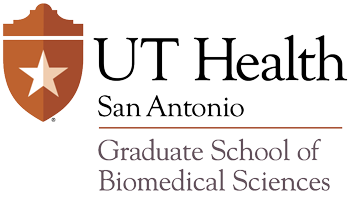Learning from Leaders: Role Models for Women in the Life Sciences

This article is a part of a series of reports from the Life Science Women’s Conference 2018, featuring mentorship, networking, and education tailored for women in the life sciences.
As someone who periodically binges on self-improvement books and TED talks, I am well-aware of the importance of dreaming big. As in, “Big Hairy Audacious Goal” big or 200-year plan big – the kind of goal that is so audacious that it’s embarrassing to admit to other people. In theory, it makes perfect sense to me why a bold and authentic goal would be more motivating than one that is safe but bland. In practice, however, I felt lukewarm about idea. As I write about it now, I realize my resistance to those types of talks arose in part because it was difficult for me relate to the people and scenarios described therein.
That changed recently, when I attended the inaugural Life Science Women’s Conference(LSWC) in Austin, TX. Every lecture, workshop, and panel featured women who were inspiring and relatable in equal measure. In other words, they were bona fide role models.
 Panel discussion on long-term strategies for driving success with Tamsen Barrett, JD, Gabriele Niederauer, PhD, and Christine Horton
Panel discussion on long-term strategies for driving success with Tamsen Barrett, JD, Gabriele Niederauer, PhD, and Christine Horton
The importance of relatable role models
What is a good role model? I have certainly benefited in the past from the guidance of excellent role models both male and female. Role models do not necessarily have to be the same race or gender in order to be relatable. Indeed, a recent survey commissioned by Facebook for their #SheMeansBusiness campaign found that aspiring female entrepreneurs are most interested in role models who work in the same sector (49 percent), who have overcome challenges or failures (44 percent), and were in similar financial circumstances when they started their businesses (37 percent). However, the impact of demographic similarities between mentors and mentees cannot be overstated: multiple studies have shown that women with female role models set more ambitious career goals, help each other stay in male-dominated fields of study like engineering, and increase the chances of other women gaining top executive positions and higher salaries when they serve on executive boards. Having female role models makes a difference for women.
That, in my mind, is the single most important raison d’Aªtre for this conference. Of all the major lessons I took away from the meeting, very few were specific to women or the life sciences. However, the convergence of these qualities in the presenters at LSWC2018 was critical to the success of the meeting for me. The ability to relate through shared identities and experiences created a sense of fellowship and instant camaraderie among the speakers and attendees. This in turn created a supportive environment that fostered open communication and interactive discussions.
Driving success: Lessons learned
The conference was structured according to six tracks, including Entrepreneurship and Hot Topics in Life Science. Like most of the attendees, I joined multiple tracks, although as a student I did focus on Career/Professional Development. I will write up my thoughts on a couple individual talks in later posts. Here, I summarize the common themes that emerged from all the talks as a whole.
In their reflections on how they achieved their success, many women emphasized the importance of playing the long game. Verena Kallhoff, PhD, MBA, speaking about career planning for graduate students, urged us to “Be outrageous when you set your long-term goals.” After all, she added, “You have twenty years to achieve it!” Christine Horton, VP of DevicePharm, shared similar advice: she gave herself until the age of 40 to achieve her goal of becoming a CEO. Having this long-term vision allowed her to be creative and make the most of unexpected opportunities: for example, she once volunteered to serve on an internal committee because it would give her guaranteed monthly face time with her company’s executive board, a rare privilege for someone as early in their career as she was at the time. (She ultimately did achieved her goal, two years earlier than originally planned).
Authentic goals do not, however, materialize out of thin air. Their identification and refinement requires deep understanding of oneself. Dr. Kallhoff, Gabriele Niederauer, PhD, and Tanya Tarr of advantageSPRING, all mentioned the power of self-knowledge. Whether this self-knowledge comes in the form of standardized assessments or thoughtful introspection, the end result is a clear identification of your strengths (and weaknesses), your core values, and your greatest aspirations.
Once you have identified your purpose and objectives, the rest is relatively straightforward. Prioritization of the many competing tasks becomes clearer. Planning for the future becomes easier, especially with the help of your network: mentors, coaches, advocates, and allies. Add to that a growth mindset and the grit to weather the inevitable deviations and setbacks, and the windy path to achieving your big, audacious dreams becomes just a bit easier.

The Path to Success (adapted from Babs Rangaiah @babs26)
Concluding thoughts
I left this meeting with feeling fully invigorated. It was inspiring and validating at the same time to see so many ambitious and successful women: women who have struggled with the same fears and challenges that I have experienced in the workplace and in graduate school. “I feel like I’m on top of the world,” several women said, on the topic of the immense joy and satisfaction they felt at work each day. I came away from this meeting with renewed hope for the future, fresh motivation, and a couple new tools for my toolbox. Tanya Tarr described one of her goals during her workshop on negotiation: to create a safe, supportive environment where women can feel emboldened to try new things, be creative, test out ideas and practice negotiating. Similarly, that is what a meeting like the LSWC can be: a gathering place where the ability to relate through shared experiences fosters a sense of fellowship among attendees and creates a supportive environment where women can be daring, vulnerable, and candid as they brainstorm ideas and solicit honest feedback. I applaud the founders of this inaugural Life Science Women’s Conference, Patti Rossman and Steve Fiske. I look forward to the growth of the LSWC and its continued contributions to life science education, research, and businesses in Texas.

“Truth is Beauty” A representation of radical self-acceptance and female empowerment © 2013 by Marco Cochrane
Learning and networking resources
Association of Women in Science (AWIS) in Austin
Herdacity (Nonprofit women’s leadership organization)
Your Edge Coaching and advantageSPRING (Negotiation training/coaching)
 This article was written by Catherine Cheng, a student in the Biology of Aging discipline of the Integrated Biomedical Sciences program at the Graduate School of Biomedical Sciences at UT Health San Antonio.
This article was written by Catherine Cheng, a student in the Biology of Aging discipline of the Integrated Biomedical Sciences program at the Graduate School of Biomedical Sciences at UT Health San Antonio.
